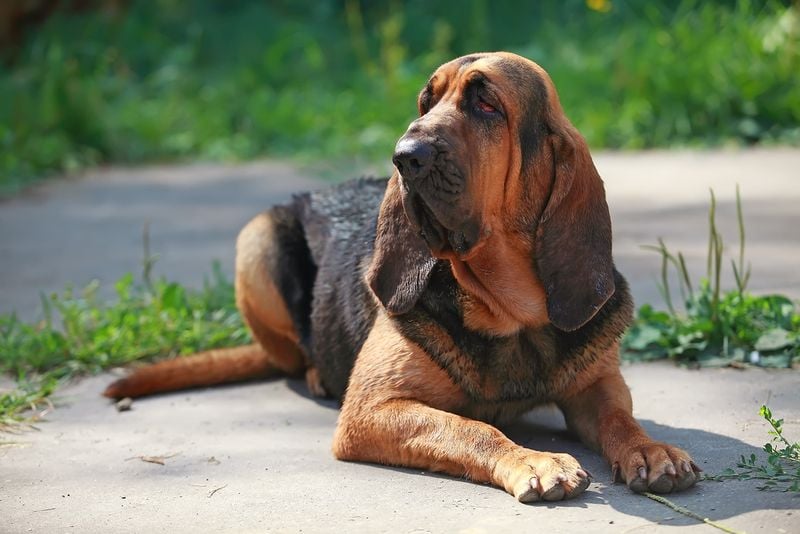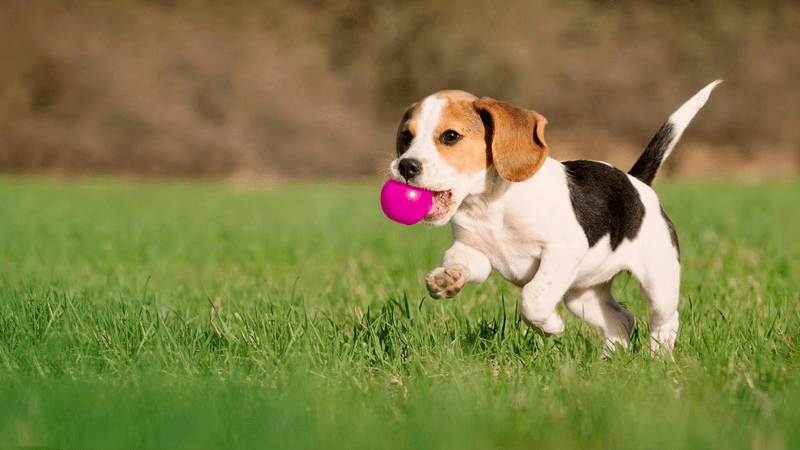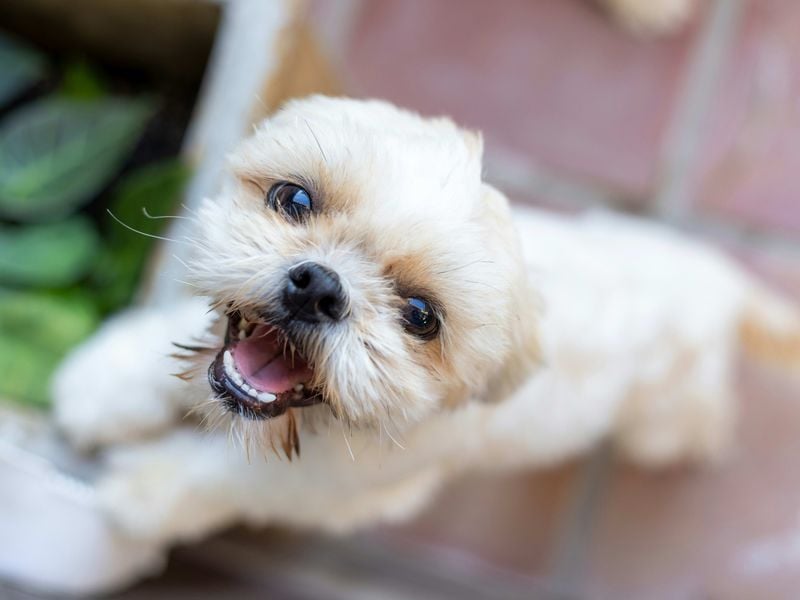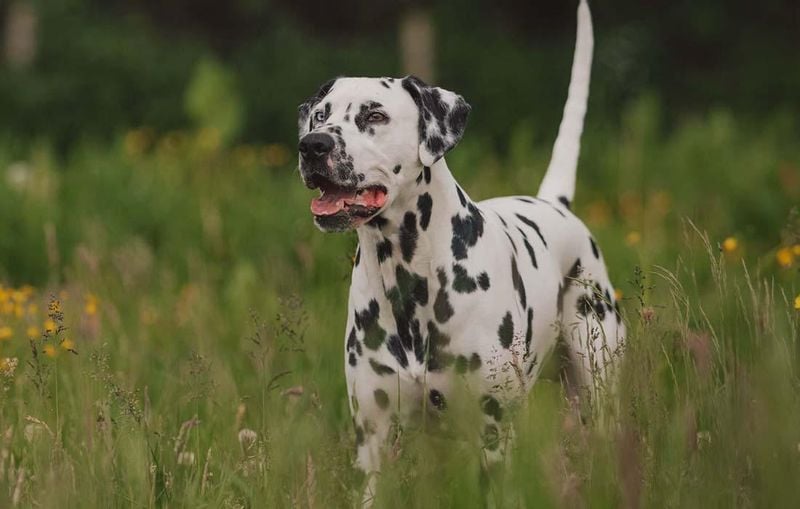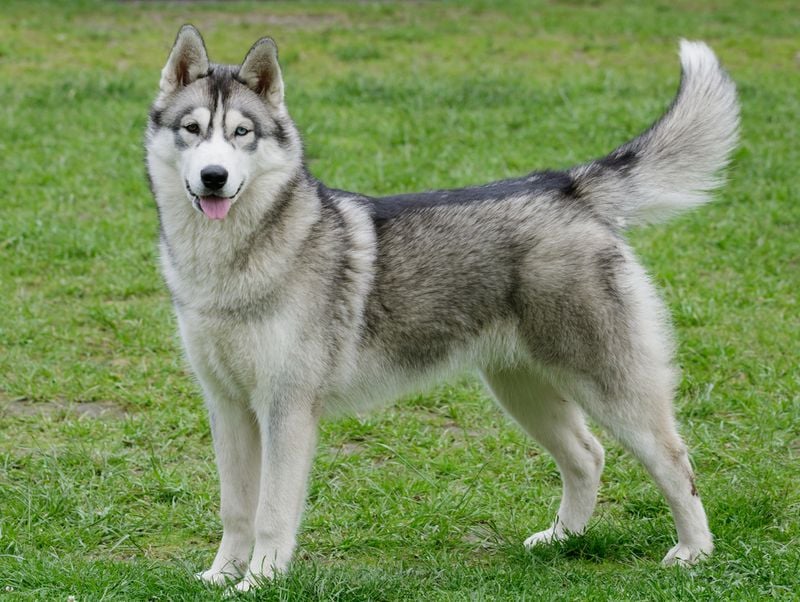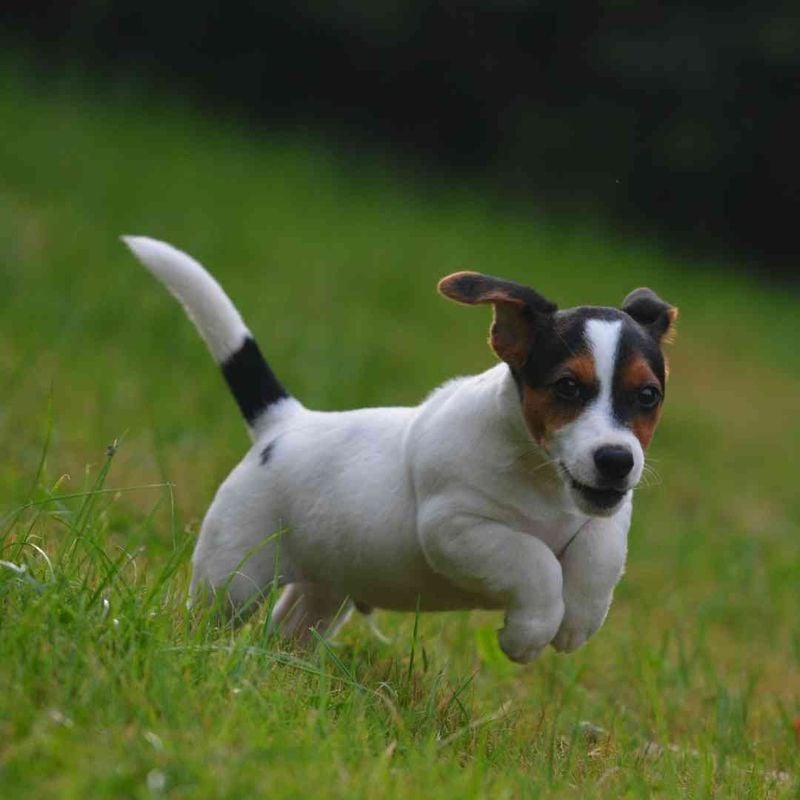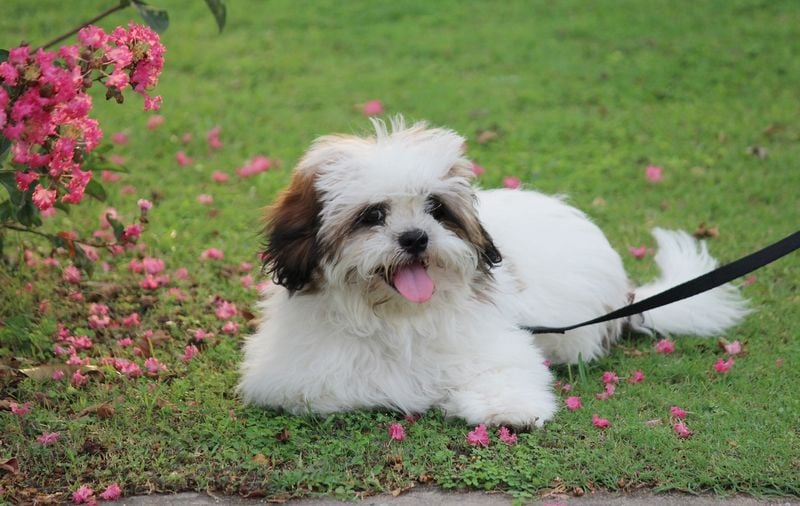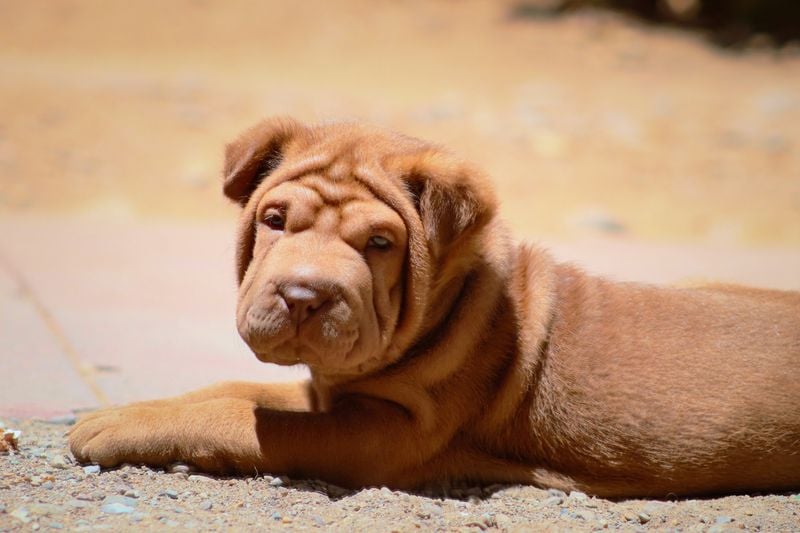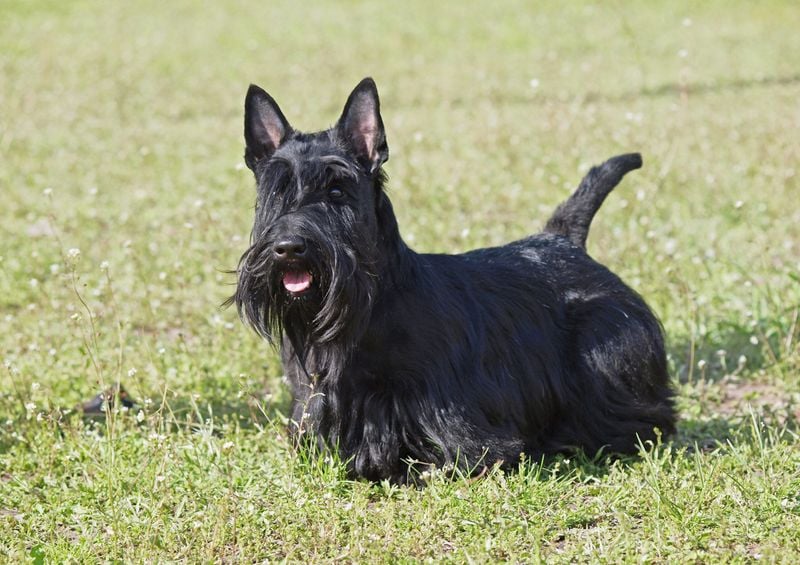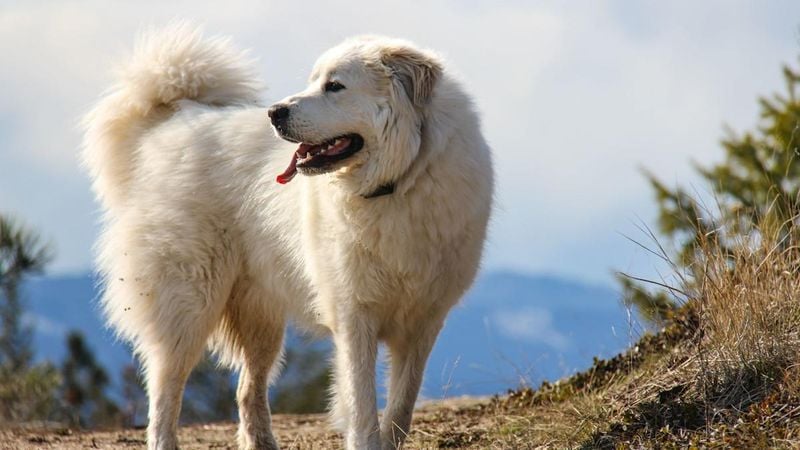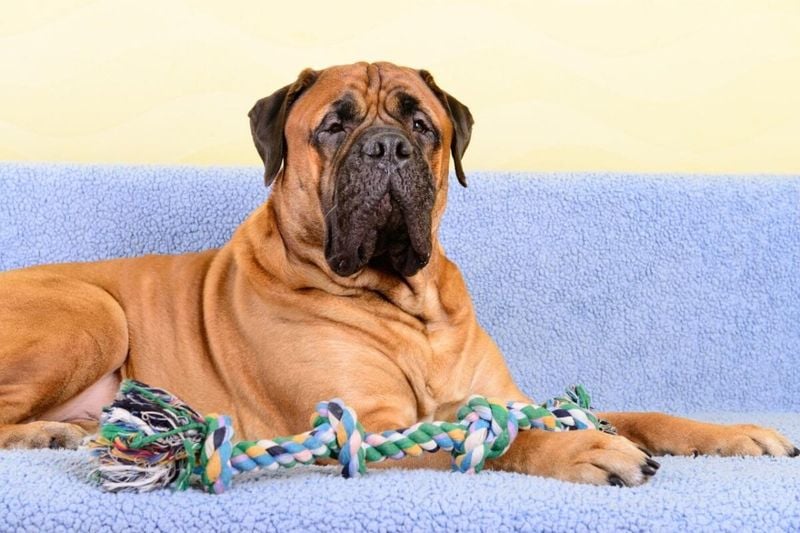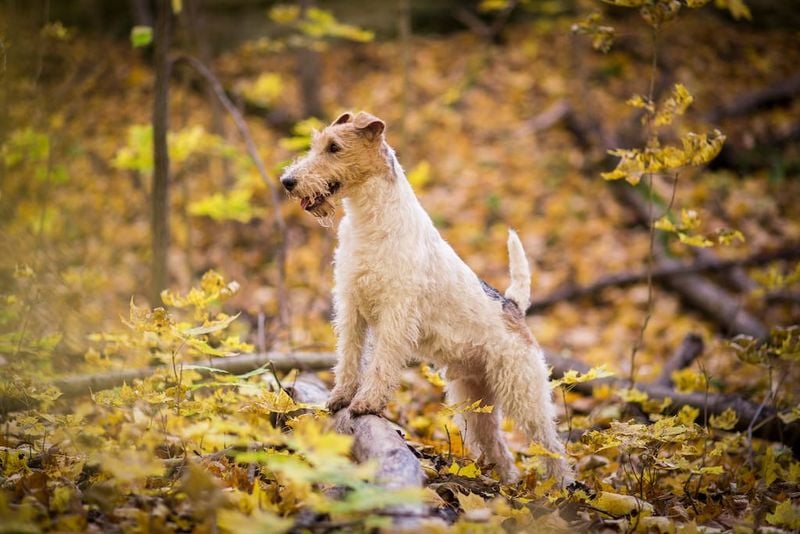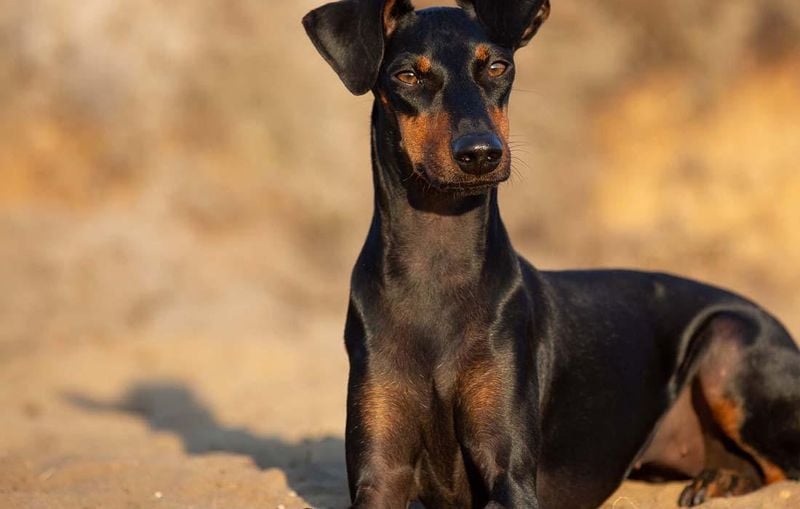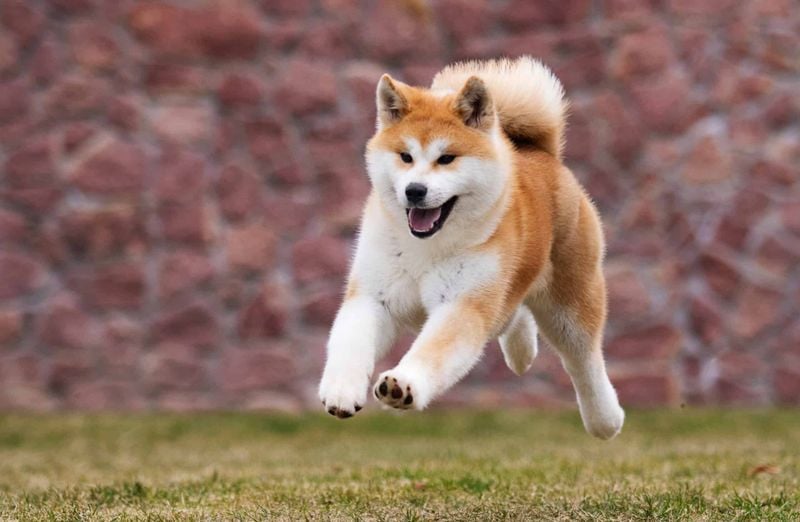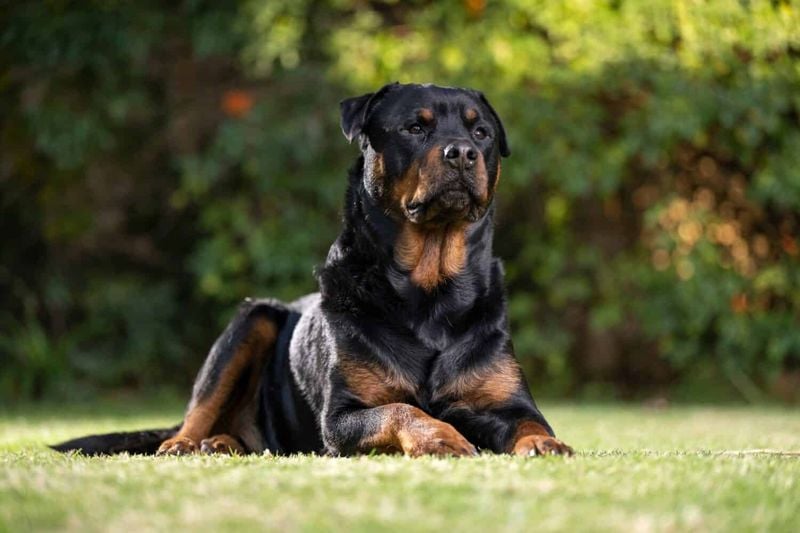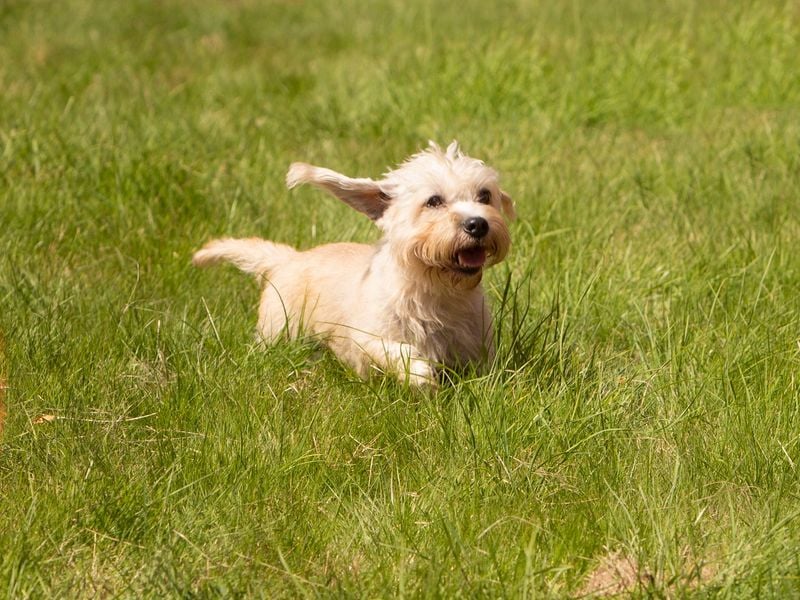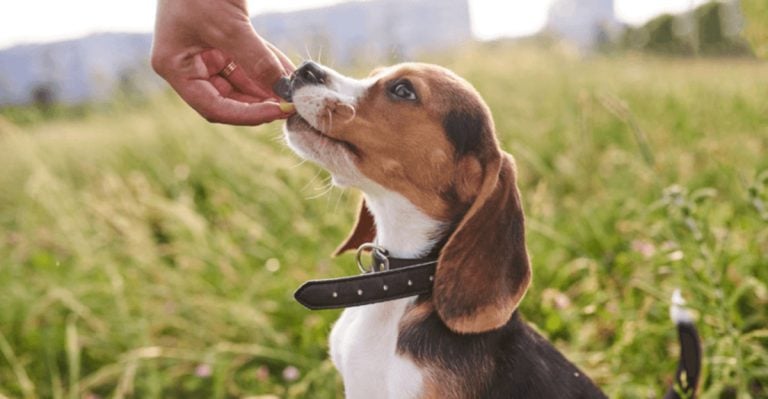Avoid These 25 Dog Breeds If You’re Not Up for a Training Battle
Bringing a dog into your home is a big commitment—one that goes far beyond cuddles, tail wags, and daily walks. It means taking responsibility for a living being who needs structure, guidance, and consistent care. While training is an essential part of any dog’s life, not all breeds learn at the same pace or respond to commands with equal enthusiasm.
Some dogs are bred for independence, others for guarding, hunting, or thinking for themselves. These instincts can make them incredibly loyal and fascinating companions—but also much harder to train. For first-time pet owners or families with tight schedules, these strong-willed, easily distracted, or high-energy breeds may prove especially challenging.
Whether you’re dreaming of a loyal sidekick or just want a well-mannered pup around the house, it’s important to know what you’re signing up for. Here are 25 dog breeds that are famously difficult to train—think twice before falling for their adorable faces without considering the work ahead.
1. Afghan Hound: The Elegant Rebel
Regal and aristocratic, Afghan Hounds may look like supermodels of the dog world, but their beauty comes with a stubborn streak a mile wide. These ancient sighthounds have independent minds and often seem to operate on their own agenda.
Training requires creativity and patience, as traditional repetitive methods quickly bore them. Their hunting instincts remain strong, making reliable recall a significant challenge.
Many Afghan owners joke that their dogs understand commands perfectly well—they just choose when (and if) to follow them. Without consistent training, these elegant rebels may become aloof household decorations rather than responsive companions.
2. Basenji: The Barkless Challenger
Known as the “barkless dog,” Basenjis communicate through unique yodel-like sounds and expressive facial movements. Their cat-like independence makes training sessions feel more like negotiations than instructions.
Originally bred to hunt in African forests, these clever canines possess problem-solving skills that often translate to mischief when bored. Escape artists by nature, they’ll test every fence and boundary you establish.
Basenjis maintain a primitive mindset that questions why they should follow commands without clear benefits. Their intelligence demands mental stimulation beyond basic obedience, making them fascinating but frustrating companions for those expecting quick training success.
3. Bulldog: The Lovable Stubborn Soul
Those adorable wrinkles and pushed-in faces hide a determination that can frustrate even experienced trainers. Bulldogs approach life at their own pace—usually slow and methodical—with little interest in rushing to please anyone.
Their seemingly lazy demeanor masks a surprisingly stubborn will. When a Bulldog decides something isn’t worth doing, good luck changing their mind! Physical limitations add another layer of challenge, as their breathing issues and heavy build make extended training sessions impractical.
Food motivation helps, but these chunky charmers quickly learn to hold out for better treats. Their loving nature makes it hard to stay frustrated, which they absolutely use to their advantage.
4. Chow Chow: The Lion-Like Independent
Behind that fluffy teddy bear appearance lies one of the most independent-minded breeds in the canine world. Chow Chows approach training with a distinctly catlike attitude—they’ll consider your request and then decide if it’s worth their effort.
Early socialization is absolutely crucial, as their natural aloofness can develop into suspicion or aggression without proper guidance. Their blue-black tongues aren’t the only unique feature; Chows possess a dignity that borders on haughtiness.
These ancient Chinese dogs form deep bonds with their chosen people but remain skeptical of strangers. Training requires consistency without harshness, as they respond poorly to force but equally poorly to inconsistent boundaries.
5. Borzoi: The Aristocratic Hunter
Graceful and refined, Borzois carry themselves with the quiet confidence of Russian nobility. These sighthounds possess an independent streak that makes training a sophisticated dance rather than a straightforward process.
Their hunting heritage means they’re easily distracted by moving objects—a squirrel can instantly erase weeks of recall training. Sensitive by nature, Borzois shut down under harsh training methods, requiring gentle guidance and positive reinforcement.
While intelligent, they question the necessity of repetitive commands. “I’ve already shown you I can sit, why must I demonstrate it again?” seems to be their attitude. Their reserved dignity can be mistaken for aloofness or stubbornness by those unfamiliar with sighthound temperaments.
6. Bloodhound: The Nose-Driven Detective
Those droopy eyes and long ears might look sad, but Bloodhounds are simply focused on what matters most to them—scents! Training takes a backseat when an interesting smell catches their attention, which happens approximately every three seconds.
Bred to track for miles, these scent-obsessed hounds follow their noses with single-minded determination. Their tracking drive means off-leash reliability remains a perpetual challenge, as they’ll happily follow an interesting trail for miles, completely deaf to your calls.
Bloodhounds combine stubbornness with a sensitive nature that makes training a delicate balance. Too harsh, and they become dejected; too soft, and they take advantage. Their legendary determination serves them well in tracking but creates training headaches.
7. Beagle: The Merry Mischief-Maker
Those expressive eyes and wagging tails hide one of the most stubborn canine spirits in the dog world. Beagles approach training with enthusiasm—just not necessarily for what you’re trying to teach!
Their noses control their brains, making focus during training sessions a constant battle. Food motivation helps, but their hunting heritage means they’ll abandon treats the moment an interesting scent wafts by.
Bred to work in packs, they developed independent thinking rather than handler focus. Selective hearing becomes an art form with Beagles—they’ll respond perfectly to the rustle of a treat bag while completely “deaf” to recall commands.
Their cheerful nature makes it hard to stay frustrated, which they use to their full advantage during training standoffs.
8. Basset Hound: The Low-Riding Rebel
Those soulful eyes and long, velvety ears hide a surprisingly stubborn nature. Basset Hounds move through life at their own deliberate pace, showing remarkable determination—just rarely for the things you want them to learn.
Bred for endurance rather than speed, these low-riders take a similarly marathon approach to training. Expect progress measured in months rather than days. Their powerful noses, second only to Bloodhounds, mean they’re constantly distracted by scents far more interesting than your training treats.
Bassets combine intelligence with independence in a challenging mix. They understand commands perfectly well but perform a cost-benefit analysis before deciding whether to comply. Their gentle, clownish nature makes it difficult to maintain training discipline.
9. Pekingese: The Imperial Little Lion
Once the treasured companions of Chinese emperors, Pekingese haven’t forgotten their royal heritage. These small dogs carry themselves with the dignity and self-importance of creatures who believe they should be carried on silk pillows.
Their independent nature makes training a negotiation rather than a command structure. Pekingese decide which rules apply to them and which are merely suggestions for lesser beings. Physical limitations add training challenges, as their flat faces mean they tire quickly during longer sessions.
Historically bred to be companions rather than working dogs, they see little purpose in tricks or commands. Positive reinforcement works best, but even then, expect your Pekingese to consider whether your approval is worth their effort.
10. Shih Tzu: The Charming Resistance
Behind those adorable faces and flowing coats lies a surprisingly stubborn spirit. Shih Tzus were bred as companion dogs for Chinese royalty, not working dogs, and they’ve maintained that distinction in their training attitudes.
These little charmers quickly learn that their cute antics often get them out of trouble. Many owners find themselves laughing at behaviors they should be correcting. Housetraining presents a particular challenge, as their small bladders combine with a stubborn streak about going outdoors in unpleasant weather.
Intelligent but independent, Shih Tzus understand commands but question why they should follow them. Their affectionate nature means they train best with positive methods focused on strengthening your bond rather than enforcing obedience.
11. Dalmatian: The Energetic Overthinker
Made famous by Disney, these spotted athletes need far more than 101 training sessions to become well-behaved companions. Dalmatians combine high energy with high intelligence in a mix that requires consistent mental and physical challenges.
Originally bred as carriage dogs, they possess remarkable stamina that translates to training frustration when not properly channeled. Boredom quickly leads to destructive behaviors or selective hearing.
Their sensitive nature means they respond poorly to harsh corrections but equally poorly to inconsistent boundaries. Dalmatians form strong opinions about everything, including which commands they find reasonable.
Without early socialization and training, their protective instincts can develop into wariness or reactivity that becomes increasingly difficult to manage.
12. Siberian Husky: The Vocal Escape Artist
Those striking blue eyes hide a mischievous mind constantly plotting the next adventure—with or without your permission. Huskies approach training with enthusiasm but maintain their own opinions about which commands are worth following.
Bred to run for miles pulling sleds, these energetic dogs view fences as suggestions and recall commands as optional. Their pack mentality means they respond better to leadership than dominance.
Boredom is your greatest enemy in husky training, as an understimulated husky becomes a creative escape artist. Their vocal nature adds another layer of challenge, as they’ll happily “argue” with you during training sessions.
Huskies require consistent boundaries without harshness and plenty of mental stimulation to channel their intelligence productively rather than destructively.
13. Jack Russell Terrier: The Tireless Tornado
Compact packages of perpetual motion, Jack Russells approach life at full speed with unwavering determination. These working terriers pack the energy and attitude of much larger dogs into a small, muscular frame that never seems to tire.
Originally bred to hunt foxes, their prey drive remains intense, making reliable recall around small animals nearly impossible. Boredom is your enemy—an understimulated Jack Russell becomes a creative destruction machine.
Their intelligence demands mental challenges beyond basic obedience. Jack Russells respond well to consistent training but quickly take advantage of any lapses in leadership.
Their tenacity—once valued for hunting—translates to a stubborn streak that can wear down inconsistent trainers. These dogs need an owner whose determination matches their own.
14. Lhasa Apso: The Sentinel with Attitude
Don’t let the flowing coat and small size fool you—Lhasa Apsos carry themselves with the confidence of much larger dogs. Originally bred as sentinel dogs in Tibetan monasteries, they maintain an independent watchfulness that can challenge training efforts.
These ancient dogs possess strong opinions about everything, including which training commands deserve their attention. Their historical role as decision-makers rather than direction-followers influences their training approach. Early socialization is crucial, as their natural suspicion of strangers can develop into reactivity.
Lhasas respond best to respectful training that acknowledges their intelligence while maintaining consistent boundaries. Their long lifespans mean training mistakes can become decade-long habits if not addressed early and consistently.
15. Chinese Shar-Pei: The Wrinkled Individualist
Those distinctive wrinkles hide a mind that’s equally complex and independent. Shar-Peis approach training with a dignified reserve that can be mistaken for stubbornness or disinterest.
Their history as guardian dogs means they naturally question new situations. Early socialization is absolutely critical, as their protective instincts can develop into aggression without proper guidance.
Physical discomfort from their wrinkles can affect training sessions, making them appear stubborn when they’re actually uncomfortable. Shar-Peis form deep bonds with their families but remain aloof with strangers.
They respond poorly to repetitive training, quickly becoming bored with commands they’ve already mastered. Their intelligence demands training that engages their mind rather than drills that test their patience.
16. Scottish Terrier: The Dignified Diehard
Beneath that distinguished beard and eyebrows lives a spirit of pure terrier determination. Scotties approach life with a dignity that borders on haughtiness, questioning why they should follow commands rather than issue them.
Their hunting heritage means they’re easily distracted by small movements, making focus during training sessions a challenge. Strong-willed and independent, they respond poorly to harsh methods but equally poorly to inconsistent boundaries.
Scottish Terriers maintain their own schedule and priorities, often seeming to weigh whether your request deserves their attention. Their natural aloofness with strangers can develop into suspicion without proper socialization. Training requires respect for their intelligence while maintaining leadership they can respect.
17. Weimaraner: The Velcro Dog with Velocity
Those distinctive silver-gray coats house athletes with boundless energy and separation anxiety that creates unique training challenges. Weimaraners form intense attachments to their people, earning them the nickname “velcro dogs” for their constant shadowing.
Originally bred as hunting companions for nobility, they combine high intelligence with high exercise needs. Boredom quickly leads to destructive behaviors that no amount of training can overcome without addressing the underlying energy requirements.
Their sensitivity means they respond poorly to harsh corrections but their intelligence means they quickly exploit inconsistent boundaries. Weimaraners need early, consistent training that channels their working drive productively while addressing their tendency toward anxious behaviors.
18. Great Pyrenees: The Independent Guardian
Majestic and imposing, Great Pyrenees were bred to make independent decisions while guarding flocks from predators—without human direction. This heritage creates unique training challenges for owners expecting prompt obedience.
These gentle giants approach commands as suggestions to consider rather than directions to follow. Their nocturnal nature means they’re naturally more active and vocal at night, regardless of your training efforts.
Barking serves as their primary guardian tool, making “quiet” commands particularly challenging. Pyrenees possess remarkable intelligence focused on guardian duties rather than pleasing handlers.
Their size adds another training dimension, as poor leash manners become dangerous quickly. Training requires respect for their independent nature while establishing boundaries they recognize as necessary.
19. Bullmastiff: The Gentle Giant with Opinions
Powerful and imposing, Bullmastiffs combine impressive strength with a surprisingly sensitive nature. Their size alone creates training urgency—behaviors manageable in small breeds become dangerous in a dog that can reach 130 pounds.
Originally bred to catch and hold poachers, these dogs make independent decisions about perceived threats. Early socialization is crucial, as their protective instincts develop during adolescence.
Physical maturity lags behind size, meaning you’ll face training a dog with adult strength but puppy impulse control. Bullmastiffs respond poorly to harsh methods but require consistent boundaries.
Their historical role tracking intruders means they maintain strong opinions about strangers entering their territory, regardless of your social calendar.
20. Fox Terrier: The Perpetual Motion Machine
Whether smooth or wire-haired, Fox Terriers approach life with boundless energy and a mischievous spark that challenges even experienced trainers. Their hunting heritage means they’re easily distracted by movement, making focus during training sessions an uphill battle.
Fox Terriers combine intelligence with independence in a mix that requires creative training approaches. Boredom is your enemy—an understimulated terrier becomes an expert in creative destruction or escaping.
Their natural digging instincts mean gardens and yards quickly become excavation sites without proper outlets. Quick to learn but equally quick to test boundaries, Fox Terriers need consistent training that channels their working drive. Their alert nature means they make excellent watchdogs but challenging naptime companions.
21. Manchester Terrier: The Clever Velvet Athlete
Sleek and athletic, Manchester Terriers pack terrier tenacity into an elegant package that belies their stubborn nature. Originally bred as ratters, they maintain a high prey drive that makes reliable recall around small animals nearly impossible.
Their intelligence means they quickly learn commands—and equally quickly learn which ones they can ignore without consequences. Manchesters bore easily with repetitive training, requiring varied sessions that engage their sharp minds.
These dogs form strong bonds with their people but maintain independent opinions about which rules apply to them. Their athletic builds mean physical containment must be secure—they can climb, jump, and squeeze through surprisingly small spaces when motivated.
22. Old English Sheepdog: The Shaggy Decision-Maker
Behind those charming bangs and ambling gait hides a mind that’s surprisingly independent for a herding breed. Old English Sheepdogs were developed to drive cattle to market without constant direction, making independent decisions along the way.
This heritage creates a dog that understands commands but questions their necessity. Their size adds training challenges, as poor leash manners or jumping become problematic quickly. Grooming requirements create another dimension—training sessions often compete with necessary brushing time.
Old English Sheepdogs possess remarkable intelligence focused on problem-solving rather than repetitive obedience. Their playful nature continues well into adulthood, meaning you’ll be training a perpetual puppy in a very large body.
23. Akita: The Dignified Protector
Noble and imposing, Akitas approach life with a dignity that challenges traditional training methods. Their ancient Japanese heritage as guardians and hunters created a dog that makes independent decisions rather than looking for constant direction.
Strong-willed and confident, Akitas require training that respects their intelligence while maintaining clear boundaries. Their natural wariness of strangers means socialization isn’t optional—it’s essential.
Without proper guidance, their protective instincts can develop into aggression that becomes increasingly difficult to manage. Akitas form deep bonds with their families but remain aloof with outsiders.
Their historical role as decision-makers means they question commands rather than automatically following them, requiring trainers who earn respect rather than demand it.
24. Rottweiler: The Powerful Thinker
Muscular and confident, Rottweilers combine impressive strength with intelligence that requires thoughtful training approaches. Their size and power mean behaviors manageable in smaller breeds become serious concerns without proper guidance.
Originally bred as drovers and guardians, Rottweilers maintain strong protective instincts that require careful channeling. Early socialization isn’t optional—it’s essential for developing a well-adjusted adult. Their physical development outpaces mental maturity, creating a challenging adolescent period where they test boundaries.
Rottweilers form deep bonds with their families but remain naturally wary of strangers. Training requires consistency without harshness, as they respond poorly to force but equally poorly to permissiveness. Their intelligence means they quickly learn which rules are actually enforced.
25. Dandie Dinmont Terrier: The Determined Individualist
Don’t let their distinctive topknot and shorter legs fool you—Dandie Dinmonts pack full terrier determination into their unique package. Named after a character in a Sir Walter Scott novel, these rare terriers maintain the independent spirit that made them effective vermin hunters.
Their hunting heritage means they’re easily distracted by small movements and scents during training sessions. Dandies possess remarkable determination when pursuing their own interests but considerably less when following commands they find unnecessary.
While intelligent, they approach training with a “what’s in it for me” attitude that challenges owners expecting eager compliance. Their independent problem-solving skills—once valued for hunting—translate to creative mischief when bored or understimulated.






